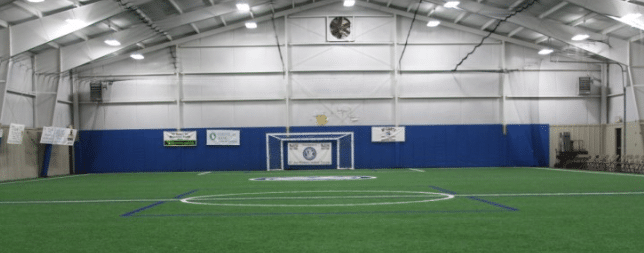How To Use Artificial Grass For Sports Arenas In Spring Valley?

- Different sports require different types of artificial grass. Football, for example, benefits from long pile grass that mimics the feel and bounce of natural grass. For tennis or basketball, a shorter pile that offers a hard surface is more appropriate.
- Infill material is what gives the artificial turf its cushioning and resilience. Sand, rubber, or a mixture of both are common choices. Sports that involve a lot of running and sliding, like football or soccer, often use rubber infill for its cushioning properties.
- Good drainage is essential for outdoor sports arenas to avoid waterlogged fields after rainfall. Your artificial grass should have efficient drainage holes, and the ground beneath should be prepared to facilitate rapid water removal.
- Even though artificial grass is low maintenance compared to natural grass, regular cleaning is still necessary. This includes removing debris, brushing to keep the fibers upright, and occasionally topping up the infill.
- Exposure to sunlight can cause artificial grass to fade over time. Choosing UV resistant grass will ensure the color stays vibrant, and the material remains robust against wear and tear.
- Poorly installed artificial grass can lead to uneven playing surfaces and reduced longevity. Engage a professional installation service to ensure the turf is installed correctly and will last for many years.
- Artificial grass can get hot in direct sunlight, which could cause discomfort or injury to players. Watering systems or choosing grass with built-in heat reduction technology can help keep the surface temperature down.
FAQs
How Long Does Artificial Grass Last In A Sports Arena?
With proper maintenance, high-quality artificial grass can last between 15 to 20 years in a sports arena. Factors such as the type of sports played, frequency of use, and maintenance routine can affect its lifespan.
Can Artificial Grass In Sports Arenas Withstand Heavy Rainfall?
Yes, artificial grass is designed to withstand all weather conditions, including heavy rainfall. The key is to have an efficient drainage system that prevents water from pooling on the surface.
Does Artificial Grass Impact The Performance Of Athletes?
Good quality artificial grass is designed to mimic the properties of natural grass closely and should not negatively impact the performance of athletes. Some athletes even prefer artificial grass due to its consistent surface and lower injury risk.
Conclusion
Artificial grass offers numerous benefits for sports arenas, from lower maintenance costs to all-weather playability. By choosing the right type of grass, ensuring proper installation, and committing to regular upkeep, you can create a sports arena that offers high performance for many years. For more information, contact Artificial Grass Spring Valley at (619) 304-0080.